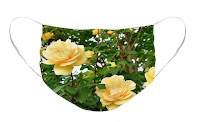Imagine you just returned from a vacation of a lifetime and your camera's memory card is full of memories :) I mean wonderful photographs you had taken during the entire vacation. You just can't wait to see how those photos would look on the big screen. So the first thing you would do after reaching home would be transferring those photos to your computer and opened them in the viewer. And your excitement just disappeared, something was not looking right! There were dark spots in few places in those photos. You checked the next photo, and the next one after that, and the last one of the lot. They all have the same problem. Those spots came from your image sensor. It was dirty before you went for vacation and somehow you forgot to clean it. Maybe you did not know it was dirty. But what could you do now? Removing those spot using photo editing software would be a daunting task. You may not even have those software license or the skills!!
Fortunately, Nikon has a feature in their camera called 'Dust off Reference Photo'. Along with their free Capture NX-D software, you can batch process all of your photos at once and all of those spots would magically disappear from your photos. I'm going to walk you through step by step on how to achieve this.
Taking the Image Dust Off ref photo:
- First press the 'Menu' button in your Nikon DSLR
- Scroll down to 'Setting'
- Enter the setting menu and scroll down to 'Image Dust Off ref photo
- You need to choose the first option, i.e. 'Start' if you are going to need to clean up images taken before you perform this activity. Here is what Nikon says. "Dust off reference data recorded before image sensor cleaning is performed cannot be used with photographs taken after image sensor cleaning is performed. Select Clean sensor and then start only if the dust off reference data will not be used with existing photographs."
- Once you press 'Ok' for any of those option, the camera will pop you the following message.
- Read carefully, it says "BRIGHT featureless WHITE Object". This is where most people get it wrong. I use a A4 / Letter size printer paper for this. Now for the 'Bright' part, make sure the light is good enough. It is better if done in outdoor, however you can use a well lit room as well. If the light is not enough, the camera will display the following error.If you get such error, it simply means the light is not bright enough. Though Nikon says all setting is automatic, here are few things you also need to consider.
- The focal length of the lens should be 50mm or more
- Put it in aperture priority and use the highest f number available in your lens e.g. f22 or f32
- Distance from the lens to the white object should be 10cm or less
- If the lens is manual focus, set the focus to infinity
- Once the camera is successful in taking the ref photo it would look something like this.
- Now take another photo of any object in regular exposure. Nikon would not tell you about this but trust me, you will need this extra photo. I prefer taking a shot of blue sky. All sensor darts are easy to identify in blue sky shot without cloud.
- Now transfer these two photos ( dust off ref photo and the regular photo you just shot) into the same directory where you have all those images with dirty spots.
- Open the folder in Nikon Capture NX-D software and click on any of the photo you want to fix.
- Go to Camera and Lens Corrections on the left panel and click on the 'Change' button you see just below 'Dust off ref photo was taken at:'
- You would get an error messages like this below.
- You know that you just copied the dust off ref photos in that directory. So why Capture NX-D can't find it? This is where everyone gets it wrong. Your dust off ref photo must have a timestamp close to the photo you want to fix. It can't apply to a photo taken few days before the dust off ref photo was taken. This is also logical as actual dust on ref photo must match with the one we are fixing. So what can you do if the Capture NX-D can't find the ref photo. I would suggest a workaround that is super easy to use.
- We will use the photo you have taken just after you took the dust off ref photo. Click on that photo and repeat step 11 above. Now Capture NX-D will happily apply the ref photo and remove it's dust. If that was a blue sky shot, you can enlarge and verify all darts are gone.
- Now go to Adjust tab and click on 'Copy All Adjustment. Once done, select one of the actual image you want to fix and come back to Adjust(A) tab and click 'Paste Adjustment'. That's it, your image would now be spot free.





















































